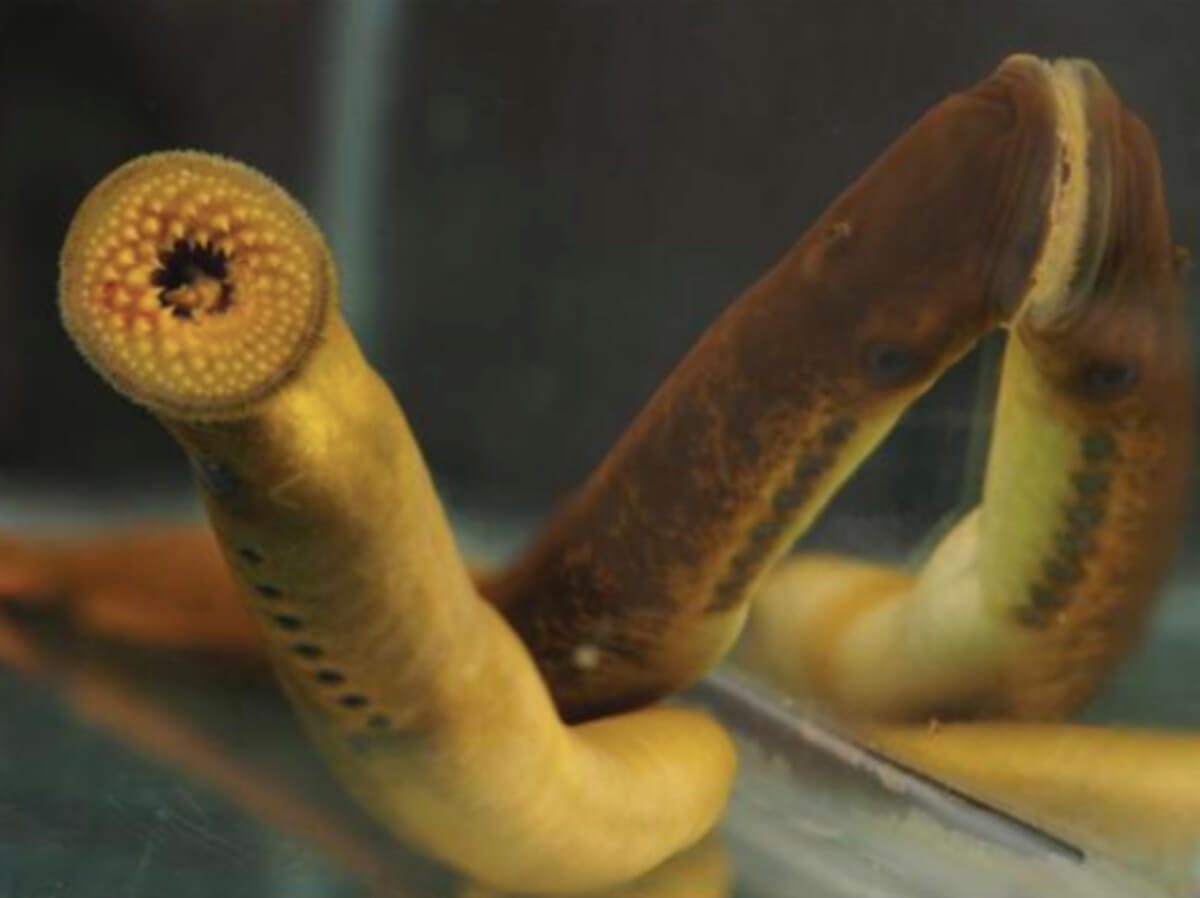
Adult sea lamprey. CREDIT: Stowers Institute for Medical Research
KANSAS CITY, Mo. — Are humans actually related to an ancient sea creature? Scientists for Stowers Institute for Medical Research believe so after unveiling surprising similarities between humans and the sea lamprey, a jawless fish that looks like it swam straight out of a horror movie. Despite its nightmarish appearance, with a mouth that resembles a sharp-toothed suction cup, this 500-million-year-old creature shares a common genetic blueprint with humans for constructing a critical part of the brain.
The research delves into the hindbrain's evolution, a key brain region responsible for regulating vital functions such as heart rate and blood pressure. What makes this study stand out is the discovery that both sea lampreys and humans use an incredibly similar molecular and genetic toolkit to build their hindbrains.
“This study on the hindbrain is essentially a window into the distant past and serves as a model for understanding the evolution of complexity,” says study co-author Dr. Hugo Parker, a researcher in Dr. Robb Krumlauf's lab at the Stowers Institute for Medical Research, in a media release.

Sea lampreys, unlike most vertebrate animals, lack jaws — a significant evolutionary divergence from their jawed counterparts, including humans. This peculiarity makes them an invaluable model for exploring the evolution of vertebrates.
“There was a split at the origin of vertebrates between jawless and jawed around 500 million years ago,” explains study lead author Dr. Alice Bedois, a former predoctoral researcher in the Krumlauf Lab. “We wanted to understand how the vertebrate brain evolved and if there was something unique to jawed vertebrates that was lacking in their jawless relatives.”
Prior collaborations between the Krumlauf Lab and Dr. Marianne Bronner, at the California Institute of Technology, have established that the genes involved in structuring the sea lamprey's hindbrain are identical to those found in jawed vertebrates, including humans. The novelty of this study lies in identifying a common molecular signal, retinoic acid (commonly known as vitamin A), which orchestrates the development of the hindbrain in sea lampreys through a complex gene network previously thought to be exclusive to more complex species.
“We found that not only are the same genes but also the same cue is involved in sea lamprey hindbrain development, suggesting this process is ancestral to all vertebrates,” notes Dr. Bedois.
This finding challenges the preconceived notion that the absence of a jaw in sea lampreys meant their hindbrain developed differently from other vertebrates.
“People thought that because sea lampreys lack a jaw, their hindbrain was not formed like other vertebrates,” says Dr. Krumlauf. “We have shown that this basic part of the brain is built in exactly the same way as mice and even humans.”
This study underscores the role of retinoic acid as a critical signal in the developmental process, prompting the formation of the brain stem and highlighting a conserved feature across all vertebrates. The implications of this research extend beyond academic curiosity, offering new perspectives on the shared evolutionary history of all vertebrate species.
“We all derived from a common ancestor,” concludes Dr. Bedois. “Sea lampreys have provided an additional clue. Now we need to look even further back in evolutionary time to discover when the gene circuitry governing hindbrain formation first evolved.”
The study is published in the journal Nature Communications.










